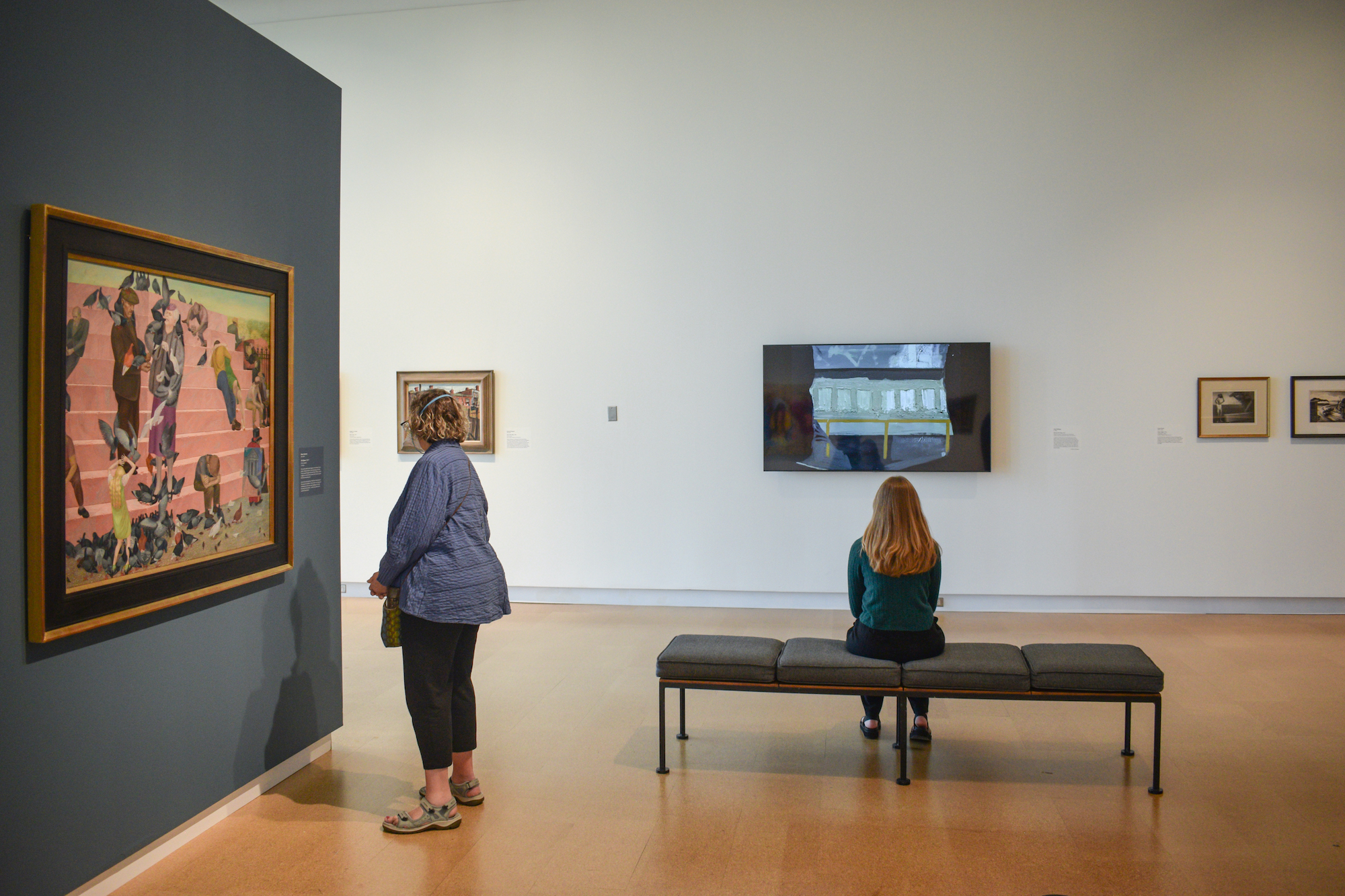Alone Together: Encounters in American Realism
May 29 – September 25, 2022
Written by Guest Curator Alex J. Taylor, Assistant Professor, Department of History of Art and Architecture, University of Pittsburgh.
In the early-to-mid twentieth century, American realist painters produced evocative images of human connection and disconnection that processed the traumas of war, civil unrest, economic depression, and many other upheavals large and small. Such works pursue an evocative, often experimental approach to realism that capture the uneasiness of a modern world in turmoil, of lonely crowds and isolating spaces, of intimate relationships that seem strangely distant.
Long overlooked in favor of more obviously modern styles, the work of such artists has recently enjoyed a resurgence of attention. One result of this interest is that contemporary painters can be seen to pursue similarly innovative approaches to representational painting that grapples with what it feels like to live in the world right now. In Alone Together: Encounters in American Realism, we bring together works separated by almost a century to consider how they are bound together by the shared experience of living and working in difficult times.
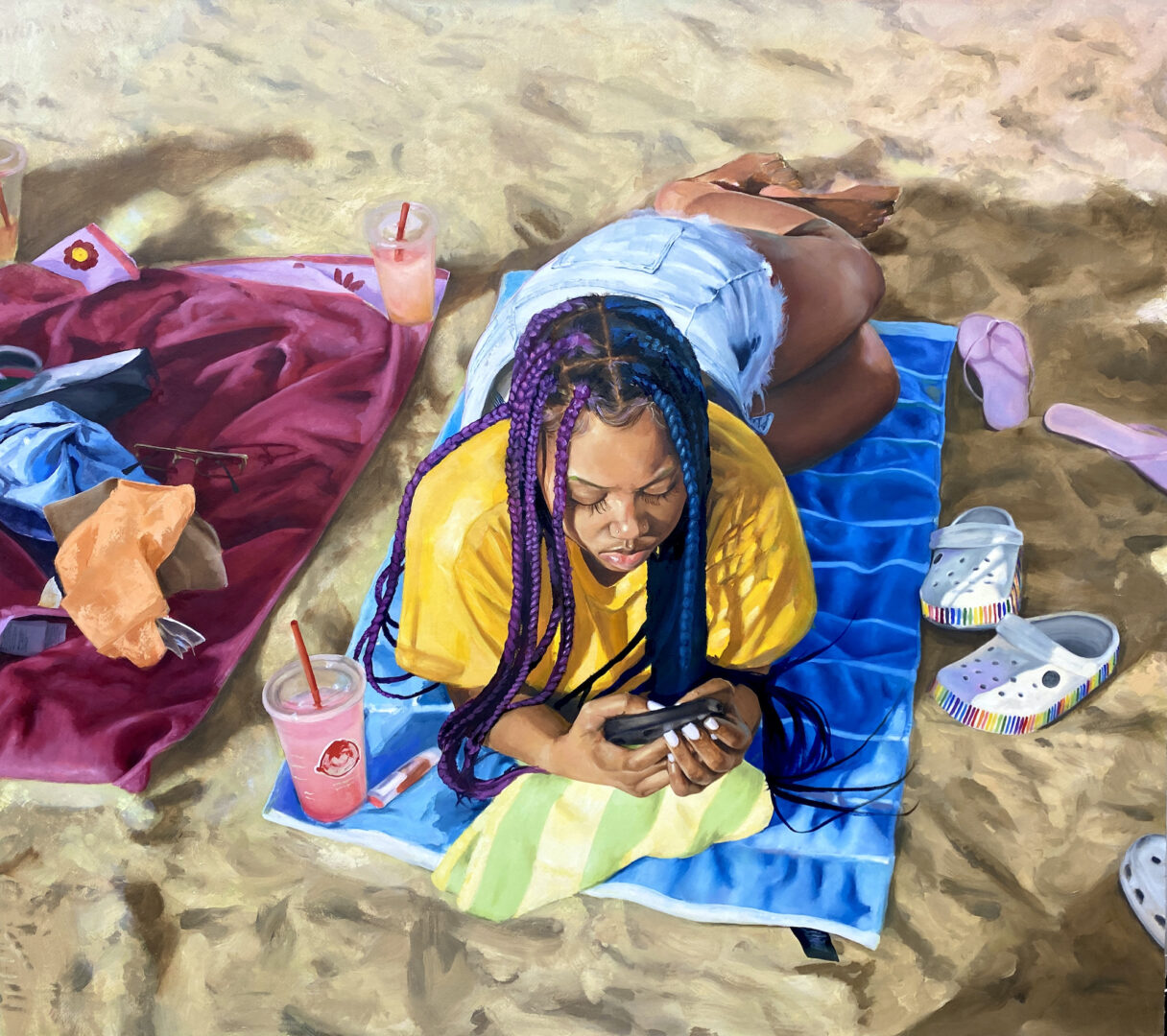
45 x 40 inches, Courtesy of the artist
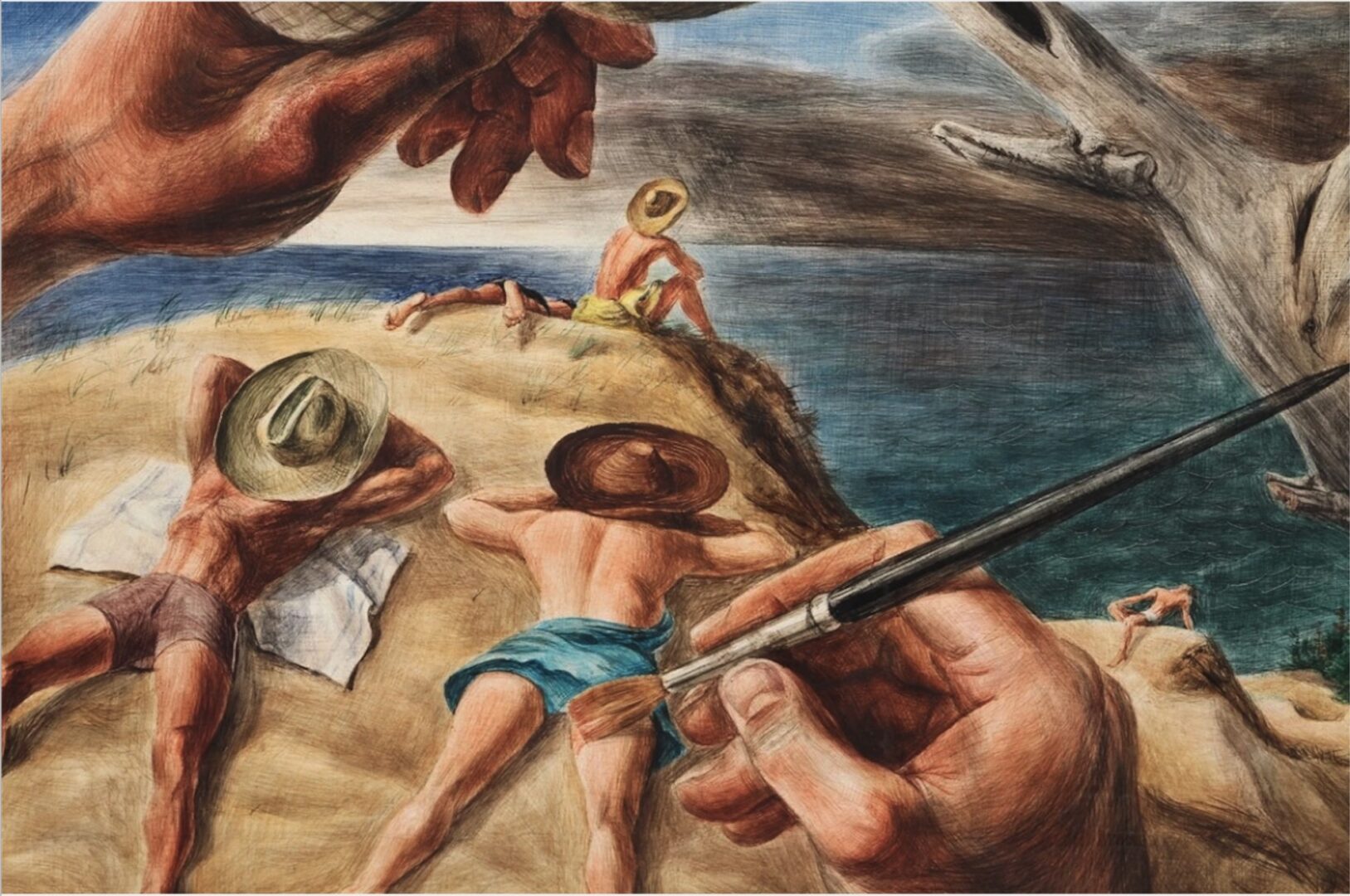
14 1/2 x 19 1/2 inches, Collection: Marty O’Brien Collection of American Art Image use courtesy of the Estate of Zoltan Sepeshy
The exhibition includes major magic realist and American scene paintings from the collection of Jason Schoen, one of the most important holdings of such work in private hands. These works have been supplemented with key loans and selections from The Westmoreland’s own collection. Alongside these historical paintings and prints, the exhibition stages encounters with works by five contemporary artists to capture shared experiences across time. To know, for instance, that a 2021 painting by Jurell Cayetano of a teen unwinding at the beach was painted at the height of the pandemic shifts the way we see beachgoers painted by Paul Cadmus and Zoltan Sepeshy from the 1940s, no less images of self-care in the midst of social turmoil.
Works by queer painters such as Cadmus, George Tooker, Jared French, Pavel Tchelitchew and others are another important thread of the exhibition, contributing to a renewed recognition of their imaginative renderings of human intimacy in the shadows. In Tooker’s case, the exhibition includes major works we are grateful to have on loan from the Palmer Museum of Art and Crystal Bridges Museum of American Art. Represented among the contemporary artists included in the exhibition, works by printmaker Opal Ecker DeRuvo capture tender, everyday moments of queer life from the inky shadows of their evocative, large-scale aquatints.
Many of the works in the exhibition are characterized by their enigmatic, dream-like vision of the social realm rendered with precise technical skill. The exhibition includes major works by artists such as Henry Koerner, Hughie Lee-Smith and Leonard Everett Fisher whose haunting urban scenes contend with the traumas of World War II. Other paintings present images of civil unrest in ways that are startlingly contemporary – including several that unfold in the shadow of monuments, or capture violent struggles in public space. Recent paintings by the Philadelphia-based artist Mary Henderson manipulate unidentified crowds to intensify the uneasiness that so often stirs beneath such images of collectivity.
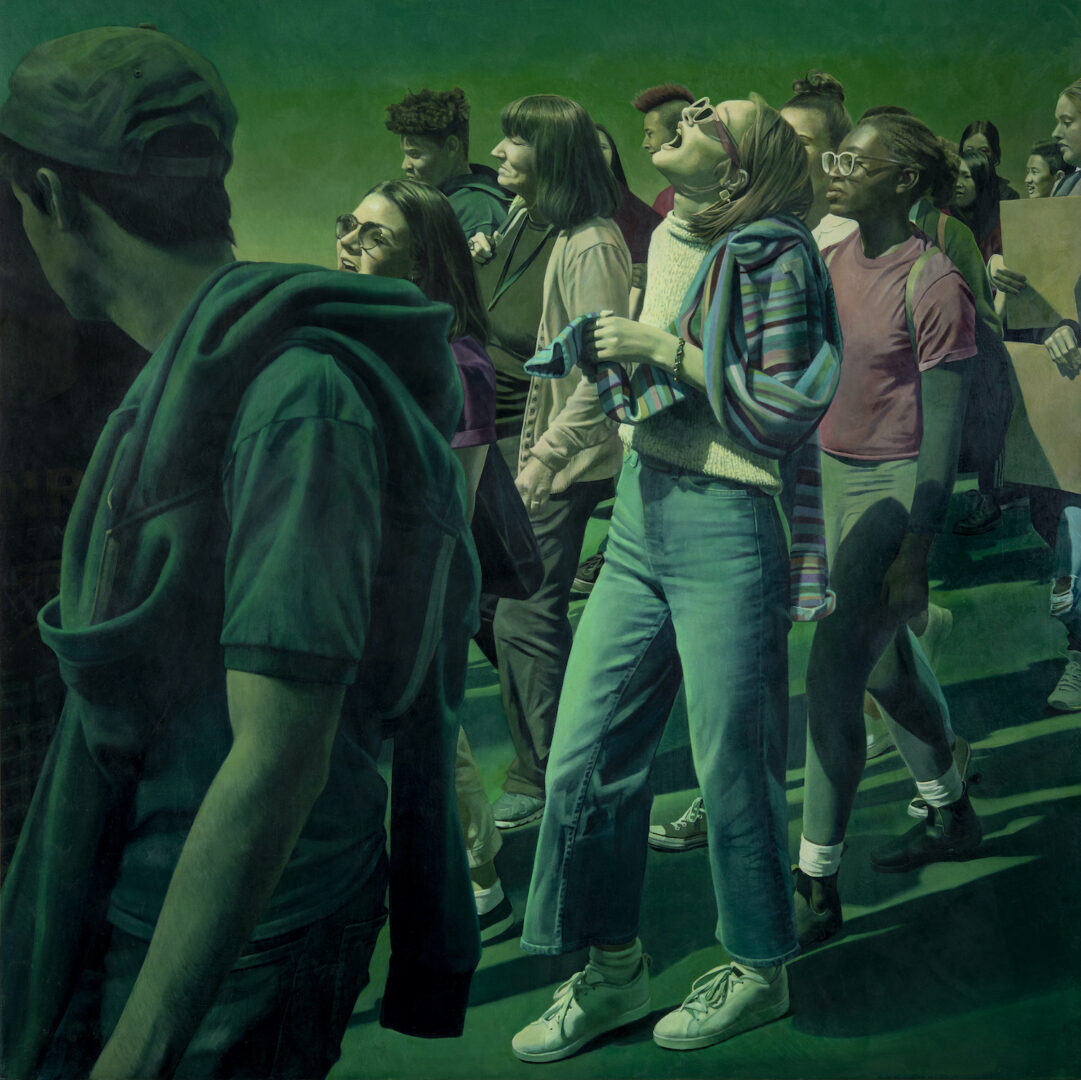
Oil on museum board mounted on wooden panel 42 x 42 inches, Courtesy of the artist
Other works in the exhibition use the solitary figure to grapple with the sense of alienation that has often been understood to define the experience of modern life. In works by Jules Kirchenbaum and others, such feelings are oriented towards the stilled figures of early Renaissance painting, prototypes recontextualized such that they seem to press pause on the flux of the modern world. Other artists draw on more everyday experiences. In the work of printmaker Mabel Dwight, for instance, the experience of being together in the crowded theatre finds satirical echoes in the on-screen action of the movie itself. The cinematic possibilities of ordinary life find even more direct expression in the hand-painted animations of contemporary artist Matt Bollinger, works whose haunting chronicles of ordinary life, at work and at home, provide something of a soundtrack for the exhibition as a whole.
While the exhibition emphasizes works associated with modern social realism and the often surrealist-inflected imagery of magic realism in the United States, it draws works from across a variety of styles to explore varied approaches to the human subject. Works by artists associated with regionalism such as Thomas Hart Benton and Grant Wood are shown here for their deeply felt sense of human longing and nostalgia, while prints by Armin Landeck and Martin Lewis capture the loneliness and nocturnal mystery of the city more famously exemplified by the work of Edward Hopper. Extending this tradition, recent paintings by Pittsburgh painter William DeBernardi isolate ordinary moments from everyday life to draw out their drama, and sometimes their comedy.
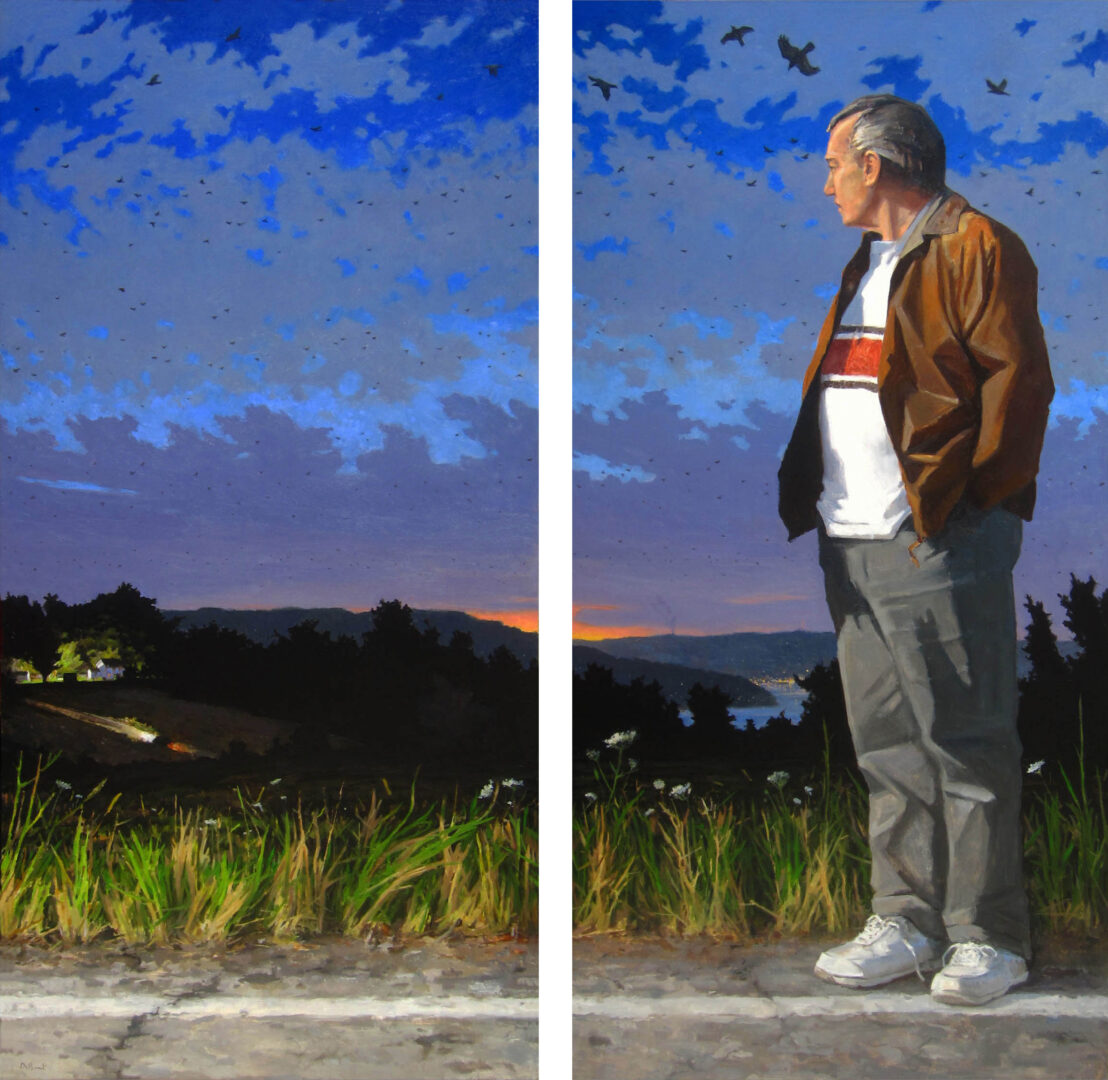
80 x 82 inches, Courtesy of the artist
Above all, this exhibition invites visitors to The Westmoreland to experience these images of human subjects in the collective space of the exhibition itself, to dream their way into the untold narratives contained in its works, and to reflect on the shared experiences that the artists of these works from past and present so evocatively capture.
Alone Together: Encounters in American Realism is guest curated by Alex J. Taylor, Assistant Professor, Department of History of Art and Architecture, University of Pittsburgh.
This exhibition is generously supported by The Heinz Endowments and the Hillman Exhibition Fund of The Westmoreland Museum of American Art.
